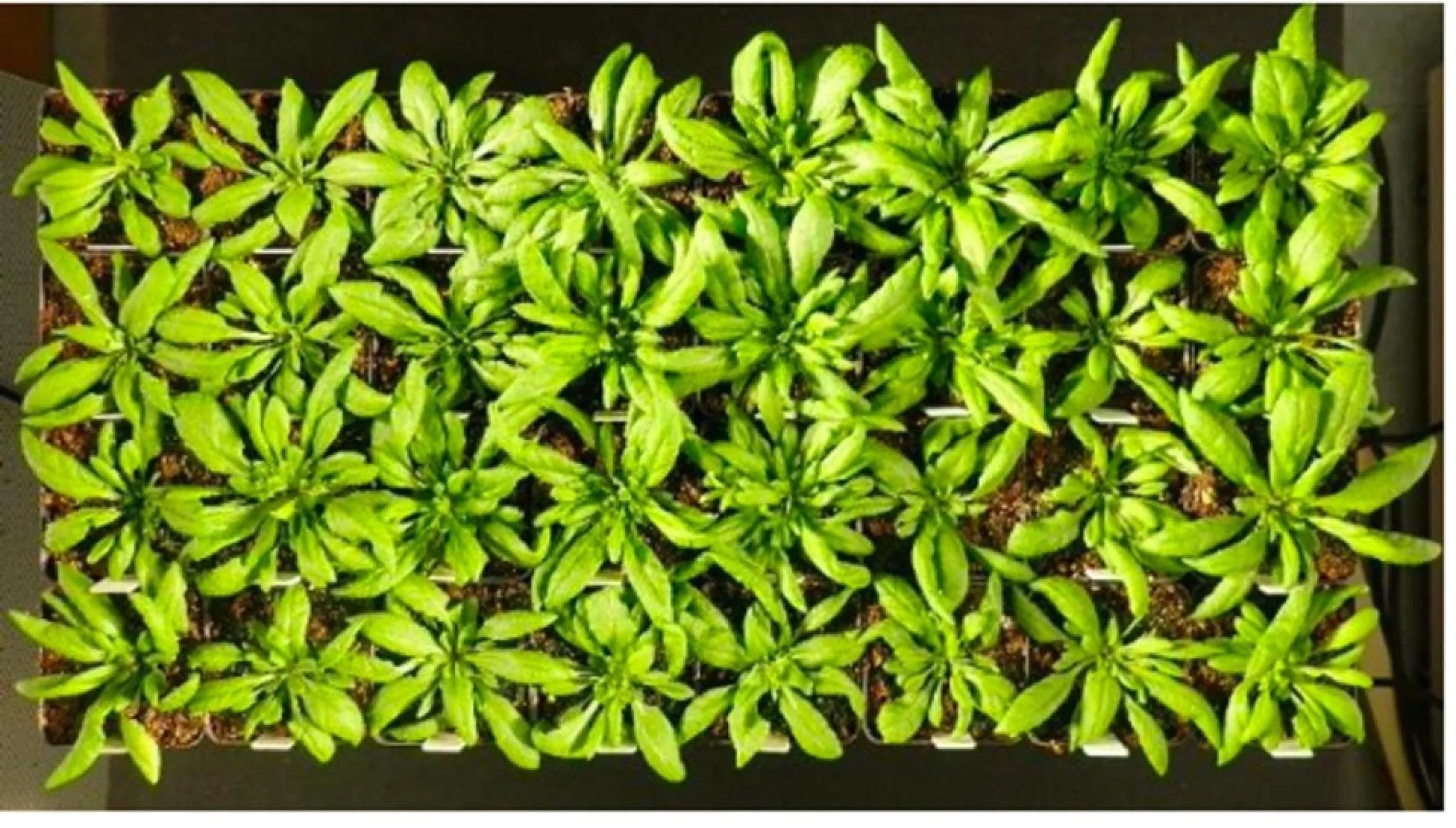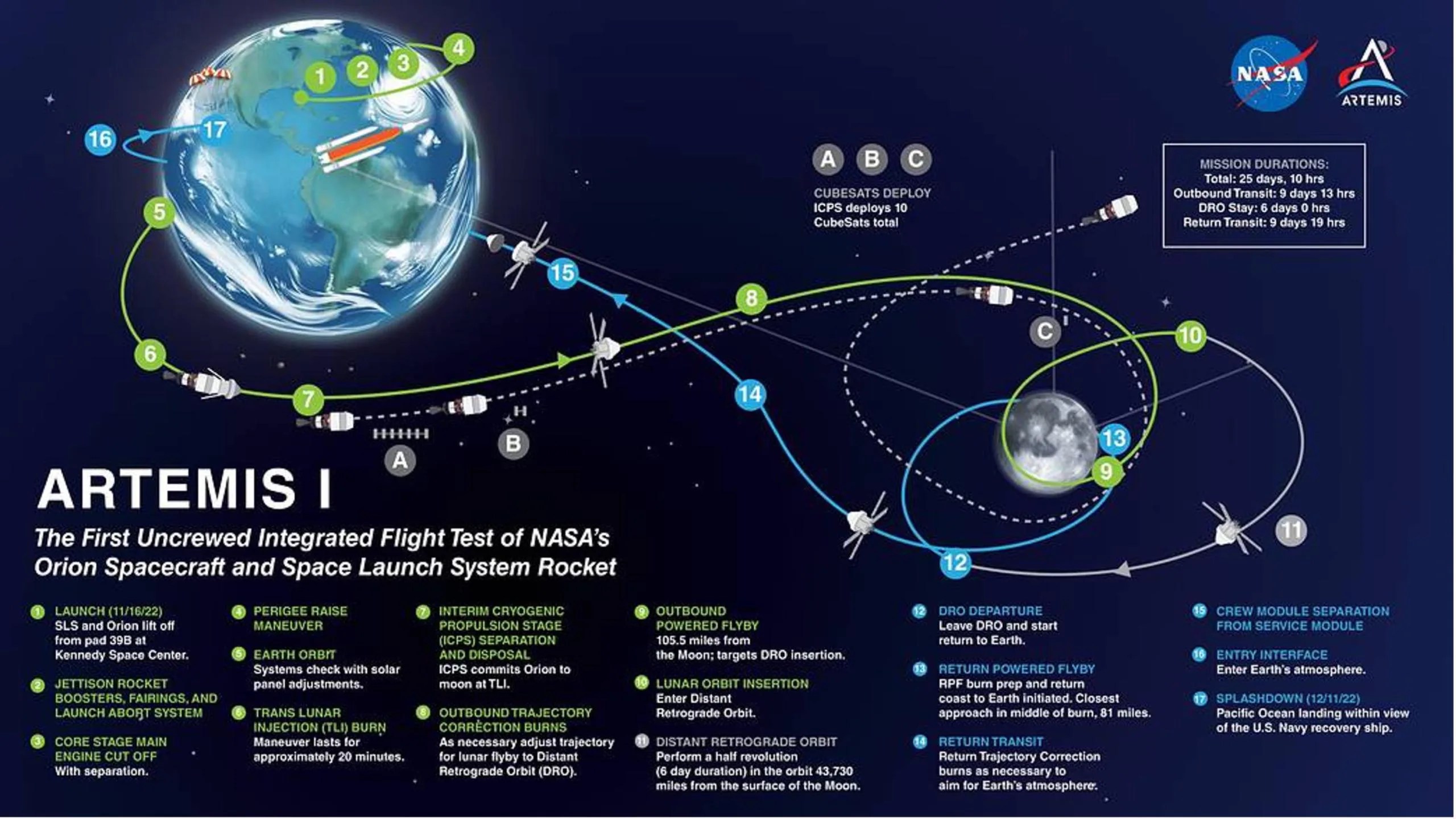Why send plant seeds on a journey beyond the Van Allen Belts?

Conditions in Space
As astronauts prepare for new missions in space, scientists are working hard to understand how space travel affects biological organisms. These missions will help pioneer scientific discovery beyond the Van Allen belts.
Variables in space, like microgravity or ionizing radiation, are different than they are on Earth. For example, the Moon has only ⅙ of Earth’s gravity and a much thinner atmosphere, which experiences more intense radiation. These differences affect living organisms, including plants.
Understanding these differences is vital to helping astronauts go farther and stay longer in space.

Researching Plants
Several biological life forms, including plant seeds, flew aboard the Artemis I mission.
Artemis I was an uncrewed test flight of the Space Launch System (SLS) and the Orion spacecraft, which flew around the Moon. The primary goals for the test flight were to demonstrate Orion’s systems and thus ensure a safe journey to the Moon and back for the first crewed flight on Artemis II. 1
The Orion spacecraft had plant seeds on board. These seeds had been modified to hold increased nutrients. Since spaceflight can strip seeds of their nutrient reserves, the goal of this experiment was to see if modifications could preserve the nutritional value of the seeds. The seeds in question had increased levels of branched-chain amino acids, which are essential to humans and can only be obtained from plants. 2
Beyond researching how to make seeds hardier for space travel, scientists also want to understand how to grow plants in space.
Growing plants in space is very different from growing them on Earth. In space, water “floats” and the supply of it is limited. The angles and hours of sunshine are different, and so is the circadian rhythm. Research is vital to overcoming these challenges, and to making it possible for plants to be grown on missions.
Impact of Research
The Artemis I mission was the precursor to Artemis II and Artemis III. During the Artemis II mission, astronauts will orbit the Moon. The Artemis III mission will enable astronauts to land on the Moon and eventually establish a basecamp.3
Eventually, these pathfinding missions on the Moon will help enable Mars exploration.
Missions to Mars could take months each way, and given the limited room aboard the spacecraft, the crew will only be able to bring limited supplies. Many supplies — like food — will need to be made instead of taken.
Understanding how to adapt plants for environments in space is crucial for supporting these crewed Artemis missions. Scientists will need to understand what plants will still provide astronauts with nutritional benefits, and what food can be grown in space. Eventually certain plants could even be identified as viable future space crops.
This research could contribute to agricultural innovations that benefit humanity. Learning more about what makes plants thrive in the extreme conditions of space could also enable us to grow hardier and more nutritional crops in harsh environments on Earth.




